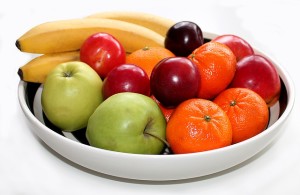Cases of scurvy are all but a thing of the past in the modern world. With the global economy and access to fresh fruits and vegetables most people have, the chances of anyone actually developing scurvy is minimal. Most people don’t even know what it is or how you get it, let alone prevent and treat scurvy.
Should something catastrophic happen that breaks the vulnerable and delicate supply chain that is woven across the planet, scurvy would rear its ugly head again. Thankfully, even though this disease wreaks havoc on the body and results in death without treatment, it is incredibly easy to prevent and treat. This article will define what scurvy is, what it does to the body, how to prevent it, and how to treat it.
What is Scurvy?
Scurvy is a disease that is caused by a lack of ascorbic acid, commonly known as vitamin C. It has a long history and was written about in Egyptian and Greek histories. Scurvy has gone by several names, most notably Barlow’s Disease (scurvy in infants) which was named for Sir Thomas Barlow who showed that infantile scurvy was the same as adult scurvy in 1883.
Most commonly found among sailors due to their lack of access to fresh fruits, vegetables, and even certain fresh meats, it took hundreds of years (and a lot of bad medicine) before the actual cause of scurvy was discovered as one of a vitamin deficiency. Cooking largely reduces the amount of vitamin C in food.
What are the symptoms and what does it do?
Symptoms, according to WebMD.com include:
- anemia
- lethargy
- dizziness
- swollen joints
- weakness
- muscle hardness
- weakening gums and,
- tooth loss.
If left completely untreated, it is possible to die from scurvy though it has likely been decades+ since that happened.
How to Prevent Scurvy
Quite simply, make sure you are getting sufficient levels of vitamin C. There are numerous foods that will ensure you will never have to deal with this disease. Surprisingly, you don’t need all that much to prevent getting scurvy.
- Any citrus fruits such as lemons, limes, oranges, and grapefruit.

- Strawberries
- Cantaloup
- Raspberries
- Any kind of pepper
- Kale
- Broccoli
- Kiwi
- Pineapple
- Carrots
- Spinach
- Potatoes
- Certain kinds of meat
How to Treat Scurvy
Again, quite simply, get some vitamin C! If you have access to orange juice, that is the most fast acting and easily absorbed into your tissues and bloodstream. Some animals make their own vitamin C and eating the meat from these animals will also help prevent and treat scurvy. (See “Prevention” section of the wiki article). Think I am making up vitamin C levels in meat? Check out this article about the diet of the indigenous people of northernmost Alaska. Commonly called Eskimos, they are actually made up of several different tribes like the Inupiat and Yupik. Their traditional diet consisted almost entirely of meat and oils/fat. They rarely saw or had any fresh greens and yet did not suffer from scurvy at all.
But, What if the SHTF?
Having vitamin C supplements is, of course, one of the easiest ways to prevent getting scurvy either alone or as a multivitamin. Other options include fortified drink mixes, dried fruit, canned fruit, etc. Finally, those who do a lot of canning know about ascorbic acid, usually in powder form. It is used to increase the acid content which aids in food preservation. Put some in water and drink! Of course, all of these will only last you so long. If the disaster is particularly bad and you run out of stocks, what can you do?
Depending on what time of year it is, there are numerous wild plants that can provide you with enough vitamin c to get you by. Dandelions are a perfect example of one: it has 32% of your vitamin C needs in a 55 gram serving! If you live in a forested area, spruce tips and pine needles can be steeped in warm water and made into a tea. Both sources have incredible amounts of vitamin c. Learn what you have in your area that grows wildly for foraging knowledge. All it takes is a quick Google search.
I’m not a doctor. I am not diagnosing anything nor am I prescribing anything. I’m just an average American who knows how to read and comprehend the English language. This article is for information purposes only. Sources include Wikipedia.com, WebMD.com, and MedicalNewsToday.com.




